Shardlands – Review
by Mark R

|
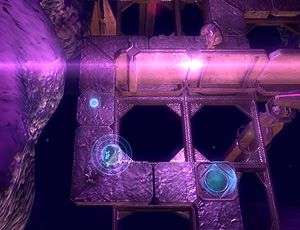 Every thousand or so years, the planets align and mystical bodies converge to unleash something beautiful and all-powerful. Sometimes it’s the birth of a new star, born out of a dense sea of nothing, and other times it’ll result in a mobile game so good that it leaves dedicated PC gamers panting for more, and dumbstruck at what they have witnessed on a hugely under-powered tablet. Shardlands, from Breach Entertainment, is one such game. The player takes on the role of Dawn, trapped in a beautiful-yet-bizarre alien world where nothing is as it seems. Scattered throughout this world is a series of keys, which must be collected in order for Dawn to make her escape but, as you’d undoubtedly expect from a puzzle game, retrieving these was never going to be easy.
Every thousand or so years, the planets align and mystical bodies converge to unleash something beautiful and all-powerful. Sometimes it’s the birth of a new star, born out of a dense sea of nothing, and other times it’ll result in a mobile game so good that it leaves dedicated PC gamers panting for more, and dumbstruck at what they have witnessed on a hugely under-powered tablet. Shardlands, from Breach Entertainment, is one such game. The player takes on the role of Dawn, trapped in a beautiful-yet-bizarre alien world where nothing is as it seems. Scattered throughout this world is a series of keys, which must be collected in order for Dawn to make her escape but, as you’d undoubtedly expect from a puzzle game, retrieving these was never going to be easy.
The first level is a relatively simple affair, easing you in to the mechanics and allowing you to get used to the control system. It becomes apparent very early on that a decent portion of the gameplay will be based on the ubiquitous slide puzzle, except this time it’s not about creating images or matching symbols – it’s up to you to calculate where each tile should go as these are what allow you to cross certain areas of the level in order to collect everything you possibly can, such as the glowing orbs, shards, and the all-important keys.
Orbs are collected for nothing more than the sake of completionism but, upon collecting that final orb, you’ll invariably notice a gateway open up at the other end of the map, leading to your final shard for that level. Without all of the orbs, the last shard can’t be obtained and without shards there is no way to unlock all of the levels. Keys, being the most important collectibles, aren’t quite as widespread as the other items and will only appear on certain levels.
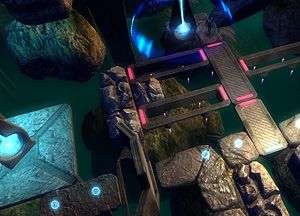 Regardless of where you start, completing a level will always send you back to the central hub – a gateway to all of the various lands. As you approach each of the portals to the individual lands, you’re shown how many shards are available within. Initially, you’d be forgiven for thinking that there were perhaps a dozen or so levels to travel to from the hub, but upon closer inspection you’d find a switch here, and an active teleport there, all of which unlock new areas within the hub or transport you to otherwise unreachable platforms. While the teleports are activated simply by standing on them and selecting them, the switches can only be used if you have collected the required number of shards prior to your attempt.
Regardless of where you start, completing a level will always send you back to the central hub – a gateway to all of the various lands. As you approach each of the portals to the individual lands, you’re shown how many shards are available within. Initially, you’d be forgiven for thinking that there were perhaps a dozen or so levels to travel to from the hub, but upon closer inspection you’d find a switch here, and an active teleport there, all of which unlock new areas within the hub or transport you to otherwise unreachable platforms. While the teleports are activated simply by standing on them and selecting them, the switches can only be used if you have collected the required number of shards prior to your attempt.
This is where the obsession kicks in – without the shards, you’re limited to the number of levels you can attempt, so the immediate solution is to ignore the levels with a smaller number of shards and focus on those with more to offer. Sadly, it’s not quite that simple as areas with fewer shards are invariably much simpler to complete than those with more. If you’re a puzzle aficionado, however, then each of the levels will undoubtedly be as complex as breathing in your sleep. Ultimately, the more shards you collect, the greater chance you have of unlocking the more challenging levels and putting your brain through the wringer.
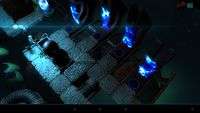 |
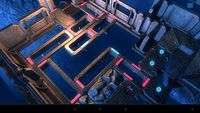 |
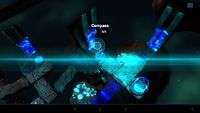 |
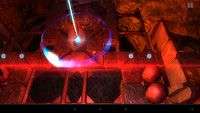 |
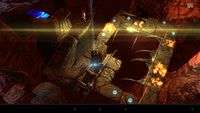 |
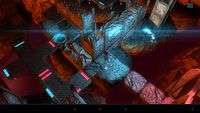 |
In terms of puzzle assortment, the sliding puzzles rear their ugly head more than the others do, but that’s primarily because it makes sense that a broken landscape would have to have another way for the residents to traverse the huge drops, or they’d all die pretty boring and lonely deaths. The beauty of the slide puzzles is that each tileset tends to be a different size, and will operate in a different manner so while one may be two tiles high and move in a north-south direction, the next one may be three tiles across and move east to west. There will also be tiles which move in all directions… but neither can be moved while you, or anything else, is standing on it.
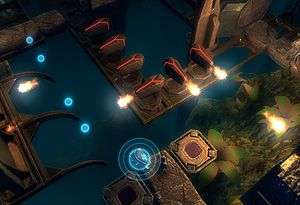 Fans of Portal may recall the puzzles where a permanently-on laser is controlled by placing cubes in a specific formation to guide the beam to a certain area, and Shardlands has something very similar. In the laser puzzles, a series of mirrors will be available – some of which are static while others can be manipulated by sliding them in the same manner as was described previously. Unlike Portal, however, these can’t be rotated along their axes and instead getting one to send the beam in a north-westerly direction could mean shifting a dozen others around while you make a considered attempt to move that one specific mirror to its required spot. It’s all as inspired as it is derivative.
Fans of Portal may recall the puzzles where a permanently-on laser is controlled by placing cubes in a specific formation to guide the beam to a certain area, and Shardlands has something very similar. In the laser puzzles, a series of mirrors will be available – some of which are static while others can be manipulated by sliding them in the same manner as was described previously. Unlike Portal, however, these can’t be rotated along their axes and instead getting one to send the beam in a north-westerly direction could mean shifting a dozen others around while you make a considered attempt to move that one specific mirror to its required spot. It’s all as inspired as it is derivative.
In the true tradition of puzzlers, it’s never going to be that straightforward. Certain doors will remain locked until toggled elsewhere on the level, and getting there may mean crossing an entire area of tiles which will crumble beneath you as you leave them, rendering you stranded if you make a wrong turn and find yourself coming up against a non-accessible area with nowhere left behind you to step. If you’ve been lucky enough to survive long enough, you may end up having to enable a light bridge to get to an area with no other means of crossing but, more often than not, that will involve a certain amount of quick thinking and finger tapping…
Because, as well as the aforementioned puzzles, Breach have taken it upon themselves to introduce some pretty fast-moving and ruthless alien beasts who, when you fall into their line of sight, will immediately pursue your character at haste and kill you with a single swipe, much like the terror of the Capital Wasteland – the deathclaw. With no weaponry or special abilities at your disposal, your only means of survival are the ethereal-looking checkpoints which will not only save your progress, but will also kill anything within a specific radius as it approaches the outer boundaries. Standing within these boundaries makes you invulnerable to attack and, should any of your enemies venture close enough but not quite break the boundary, a fizzling magenta lightning bolt will shoot out to wipe them from the face of the planet.
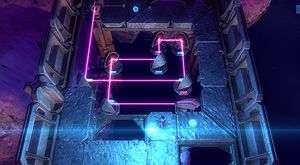 Naturally, these beasts tend to follow a set path and will cross over each other at times, so a lot of the progress comes down to a conscious choice – do you attempt to lure them back to your safe spot one at a time, taking them out individually, or do you make a run for the next checkpoint and hope that you get there without incident? This is where nimble fingers come in because, just as you move to your destination by touching your chosen tile, a double tap will get you there much quicker, but at the expense of your energy bar.
Naturally, these beasts tend to follow a set path and will cross over each other at times, so a lot of the progress comes down to a conscious choice – do you attempt to lure them back to your safe spot one at a time, taking them out individually, or do you make a run for the next checkpoint and hope that you get there without incident? This is where nimble fingers come in because, just as you move to your destination by touching your chosen tile, a double tap will get you there much quicker, but at the expense of your energy bar.
Once depleted, you will need to wait for it to refill before attempting another speed run so if, much like Pac-Man with his beloved ghosts, you misjudge your timing and set off on a sprint only to find yourself about to be cornered, you’ll most likely not have enough energy to get back to a safe area and will meet your demise. Thankfully, Breach thought far enough ahead to place hollow obelisks in certain levels as somewhere you can dash inside and remain unseen until enemies pass. These obelisks, however, tend to be at a point where several enemies converge every few seconds and so getting there can be a task in itself at times.
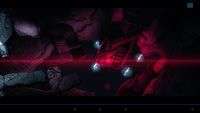 |
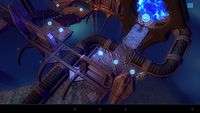 |
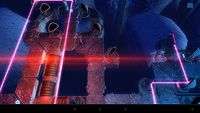 |
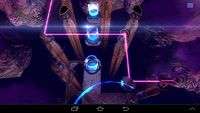 |
 |
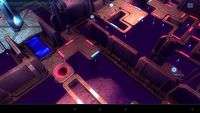 |
Ultimately, every aspect of every level is there to make you think. Sometimes that involves nothing more than sliding a few tiles here and there, and other times, in a very smart move by Breach, that may require you to move those same tiles several times into different formations to get from one area to another and back again. With more than a dozen hours behind it, Shardlands is – as was mentioned at the start – one of those games which can surprise and delight even a dedicated PC gamer. The level of detail and forethought that has gone into the game as a whole makes it very rewarding, and moreso for someone who would typically ignore the mobile market and the ‘casual’ games that it tends to offer. Shardlands, however, is an entirely different beast altogether. A mixture of Pac-Man, Portal, and all manner of tried-and-tested brain teasers, it delivers more than was initially expected, and it does so beautifully.
Pros- Stunning visuals
- Very atmospheric
- Great mix of different puzzle types
- User-friendly controls
- A real time sink
- Excellent variation in level structure
- Just seriously impressive, overall
- Could MAYBE do with an extra checkpoint here and there on later levels
Shardlands is one of those gems where you're initially drawn in because of the visuals, whether quirky or breathtaking, but you stay for the gameplay. From the first level, where there's a degree of hand-holding to ease you in, there's enough indication to let you know that this is going to be a pleasant, if frustrating, journey. As each level completes, the difficulty of the next increases and the amount of forward thinking and brain power required for each solution is ramped up, making it perfectly balanced overall. This is, by far, the best game I've played so far this year. Yet it's a mobile game. This is a testament to the developers, and I can't recommend it enough.
Last five articles by Mark R
- From Acorns to Fish
- Alone In The Dark
- Why Borderlands is Better Than Borderlands 2
- Falling Short
- The Division: A Guide to Surviving the Dark Zone Solo

















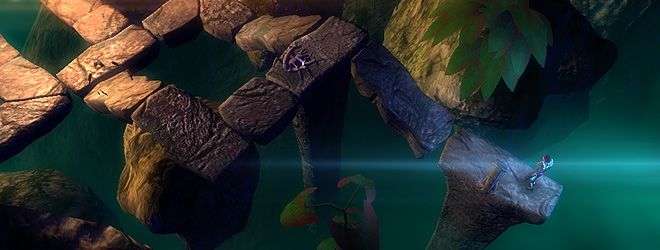
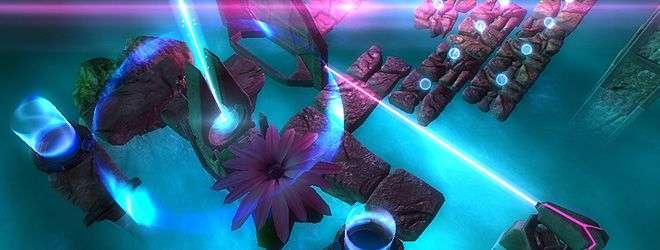






Please help… Where can I find the glyph for the bottom left of the machine in the hub? Got everything else but the last one is driving me crazy. Thanks.